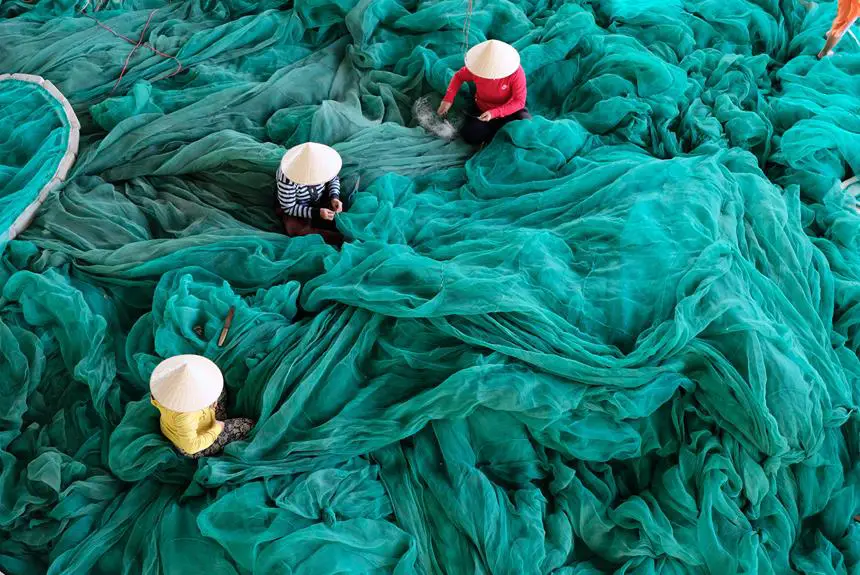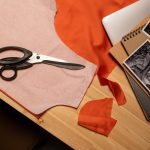When it comes to crafting the perfect garment, the choice between hand-sewn buttonholes and machine-finished ones symbolizes a crucial decision. Both techniques have their merits, and mastering the art of fabric finish is key to achieving professional results.
You seek mastery in your craft, and understanding the nuances of hand-sewn buttonholes versus machine-sewn ones will elevate your work to the next level. In this exploration, we will delve into the intricacies of each method, considering factors such as aesthetics, durability, and fabric compatibility.
By the end, you will be equipped to make an informed choice, ensuring that your fabric finish perfectly complements your skill and vision.
Key Takeaways
- Hand-sewn buttonholes showcase meticulous craftsmanship and exquisite detailing, adding a unique and personal touch to the garment.
- Machine-made buttonholes prioritize speed and consistency, offering efficiency and precision essential for mass production.
- Hand-sewn buttonholes exude elegance and precision, reflecting a deep respect for the art of sewing and conveying sophistication and refinement.
- Machine-made buttonholes provide uniformity in size, shape, and stitch density, enhancing the overall aesthetics and meeting the high standards of modern garment construction.
History of Buttonhole Techniques
When you delve into the history of buttonhole techniques, it becomes evident that hand-sewn buttonholes have a rich tradition rooted in craftsmanship and artistry. The evolution of hand-sewn buttonholes showcases the ingenuity and skill of craftsmen throughout history. From the early days of meticulously hand-stitched buttonholes to the technological advancements in buttonhole craftsmanship, the process has seen significant changes.
The cultural significance of hand-sewn buttonholes is profound, with different cultures adding their unique flair to this art form.
The evolution of buttonhole techniques reflects the dedication to perfecting this intricate craft. Technological advancements in buttonhole craftsmanship have enabled the creation of more precise and durable buttonholes, while still maintaining the elegance and sophistication of hand-sewn techniques. Understanding the history of buttonhole techniques provides insight into the artistry and precision required to create these fabric finishings.
Exploring the history of buttonhole techniques allows you to appreciate the mastery and artistry that goes into creating hand-sewn buttonholes. It also sheds light on the cultural significance and evolution of this timeless craft.
Aesthetics and Precision
When it comes to the aesthetics and precision of buttonholes, handcrafted elegance offers a unique charm that can't be replicated by machine-made uniformity.
Hand-sewn buttonholes showcase the artistry and skill of the craftsman, providing a touch of individuality and character to the fabric finish.
On the other hand, machine-made buttonholes prioritize speed and consistency, ensuring precise and uniform results.
Handcrafted Elegance
You can appreciate the meticulous craftsmanship and exquisite detailing of hand-sewn buttonholes, which exude an unparalleled sense of elegance and precision.
Handcrafted elegance encompasses more than just the end product; it represents a dedication to traditional techniques and a revival of craftsmanship.
The artisanal touch in hand-sewn buttonholes reflects a deep respect for the art of sewing, showcasing the skill, patience, and attention to detail of the craftsman.
Each hand-sewn buttonhole tells a story of tradition and heritage, adding a unique and personal touch to the garment.
The precision and care taken in creating hand-sewn buttonholes convey a level of sophistication and refinement that's hard to replicate.
Machine-Made Uniformity
Achieving machine-made uniformity in buttonhole aesthetics and precision requires careful calibration and consistent stitching. Machine-made buttonholes offer a level of efficiency and precision that's difficult to achieve with handcrafted uniqueness.
The consistent stitching of machine-made buttonholes ensures uniformity in size, shape, and stitch density, resulting in a polished and professional finish. The efficiency of machine-made buttonholes also guarantees a higher level of accuracy and repeatability, which is essential for mass production and uniformity in garment construction.
The precision of machine-made buttonholes provides a clean and flawless appearance, enhancing the overall aesthetics of the fabric finish. With machine-made uniformity, you can expect a consistent and refined look across all buttonholes, meeting the high standards of modern garment construction.
Precision Vs. Speed
To achieve superior fabric finish, prioritize precision over speed in buttonhole construction. When it comes to creating buttonholes, precision is paramount for a professional and polished look. Consider the following to understand the importance of precision over speed:
- Precision ensures every stitch is perfectly aligned, elevating the overall aesthetics of the garment.
- Efficiency shouldn't compromise accuracy; taking time to ensure each buttonhole is meticulously crafted showcases dedication to quality.
- Accuracy in hand-sewn buttonholes reflects the artistry and skill of the craftsman, adding value to the garment.
- Productivity shouldn't overshadow the pursuit of excellence; taking the time to prioritize precision ultimately leads to a fabric finish that's unparalleled.
Striking the right balance between precision and speed is essential for achieving a fabric finish that exudes quality and craftsmanship.
Durability and Wear
When it comes to durability and wear, you might be wondering how hand-sewn buttonholes compare to machine-sewn ones.
Hand-sewn buttonholes offer meticulous precision stitches, ensuring a high level of durability.
On the other hand, machine-sewn buttonholes provide strength and speed, but their impact on the fabric's longevity is a crucial aspect to consider.
Hand-Sewn Precision Stitches
As you examine the fine details of hand-sewn precision stitches, you may notice their exceptional durability and wear compared to machine-sewn counterparts. Precision hand sewing offers several advantages over machine-sewn stitches in terms of longevity and resilience.
Consider the following:
- Intricate Detailing: Hand-sewn precision stitches allow for meticulous detailing, enhancing the overall aesthetic appeal of fabric embellishments.
- Enhanced Strength: The manual nature of precision hand sewing results in stronger and more secure stitches, contributing to the longevity of the fabric finish.
- Personalized Touch: The craftsmanship involved in precision hand sewing adds a personalized touch, reflecting dedication and artistry.
- Exceptional Durability: Hand-sewn precision stitches withstand wear and tear exceptionally well, ensuring the longevity of the fabric finish.
These factors collectively contribute to the superiority of hand-sewn precision stitches in terms of durability and wear, making them a preferred choice for fabric embellishments.
Machine-Sewn Strength and Speed
Comparing to hand-sewn precision stitches, machine-sewn buttonholes offer a different set of advantages when it comes to durability and wear. Machines can provide consistent stitching, ensuring strength and durability in the buttonholes. This method is ideal for garments that will undergo frequent use and washing. Moreover, machine-sewn buttonholes are created with efficiency, saving time and increasing production speed, which is essential in a commercial setting. Here's a comparison of machine-sewn buttonholes in terms of strength, durability, speed, and efficiency:
| Strength | Durability | Speed |
|---|---|---|
| Consistent | Long-lasting | Efficient |
| Reliable | Resilient | Time-saving |
| Strong | Enduring | Rapid |
Machine-sewn buttonholes excel in providing reliable strength and durability, while also offering efficiency and speed in production.
Impact on Fabric
Fabric durability and wear are significantly influenced by the method used to create buttonholes, impacting the overall quality and longevity of the garment. When considering the impact on fabric strength, it's crucial to recognize the differences between hand-sewn and machine-sewn buttonholes.
Here's how the method of creating buttonholes can affect your garment:
- Handcrafted Beauty: Hand-sewn buttonholes add a touch of artisanal elegance, enhancing the overall aesthetic appeal of the garment.
- Fabric Longevity: Hand-sewn buttonholes, when done with care, tend to be more gentle on delicate fabrics, extending the lifespan of the garment.
- Strength and Durability: Machine-sewn buttonholes, while efficient, may not provide the same level of strength and durability as their hand-sewn counterparts.
- Quality Assurance: Hand-sewn buttonholes offer meticulous attention to detail, ensuring that the fabric remains intact and resistant to wear over time.
Time and Labor Investment
When creating buttonholes, you can save time and labor by using a machine rather than hand-sewing. While hand-sewn buttonholes require significant time investment and skilled craftsmanship, machine-sewn buttonholes offer efficiency and consistency. Here's a comparison of the time and labor investment for both methods:
| Aspect | Hand-Sewn Buttonholes | Machine-Sewn Buttonholes |
|---|---|---|
| Time Investment | Requires extensive time and precision | Quick and efficient process |
| Skilled Craftsmanship | Relies heavily on the skill of the | Relatively less skill-intensive, |
| seamstress or tailor | suitable for less experienced sewers |
Hand-sewn buttonholes demand meticulous attention to detail, making them a labor-intensive process that requires a high level of expertise. Conversely, machine-sewn buttonholes can be completed swiftly and consistently, making them a more practical choice for time-sensitive projects or for those with less experience in sewing. While hand-sewn buttonholes showcase traditional craftsmanship, machine-sewn buttonholes offer a balance between quality and efficiency. Ultimately, the choice between the two methods depends on the specific requirements of the project and the available resources.
Fabric Compatibility
To achieve optimal fabric compatibility for buttonholes, consider the characteristics and weight of the fabric, influencing the choice between hand-sewn and machine-sewn methods.
When evaluating fabric strength, hand-sewn buttonholes are ideal for delicate fabrics like silk and chiffon, as they minimize the risk of fabric distortion. On the other hand, machine-sewn buttonholes are suitable for heavier fabrics such as denim and wool, offering durability and stability.
Additionally, the handcrafted beauty of hand-sewn buttonholes enhances the elegance of fine fabrics, adding a bespoke touch to garments. Conversely, machine-sewn buttonholes provide a more uniform and consistent finish, which complements the structured nature of heavier fabrics.
Ultimately, fabric compatibility plays a crucial role in determining the most appropriate method for creating buttonholes, ensuring that the strength and drape of the fabric are preserved while achieving a flawless finish.
- Delicate fabrics require the finesse of hand-sewn buttonholes for a sophisticated touch.
- Heavyweight fabrics benefit from the durability of machine-sewn buttonholes, ensuring longevity.
- Hand-sewn buttonholes elevate the handcrafted beauty of fine fabrics, adding a bespoke element to garments.
- Machine-sewn buttonholes offer uniformity and consistency, complementing the structured nature of heavier fabrics.
Professional Vs. DIY
Choosing between professional and DIY buttonhole techniques can significantly impact the outcome of your garment, especially when considering the fabric type and desired finish. Professional expertise often ensures precise, polished buttonholes that elevate the overall look of the garment. On the other hand, honing your DIY skills allows for a personalized touch and the satisfaction of creating something entirely by yourself. Here's a comparison to help you decide which approach aligns best with your needs:
| Professional Expertise | DIY Skills |
|---|---|
| Extensive experience and training | Opportunity for creative expression |
| Consistent, high-quality results | Tailored to personal preferences |
| Efficient and time-saving | Learning and skill development |
| Often more expensive | Cost-effective |
When weighing the choice between professional and DIY buttonhole techniques, consider the level of precision and finish you desire, as well as your budget and time constraints. While professional expertise guarantees a refined outcome, developing DIY skills allows for individuality and creativity in your garment construction. Ultimately, the decision rests on your priorities and the specific requirements of your project.
Conclusion: Making the Right Choice
In making the right choice between hand-sewn and machine buttonholes, consider the overall appearance and durability as key factors. Both options have their merits, and weighing the options is essential to making the best choice for your project.
When making this decision, it's crucial to consider the following:
- Craftsmanship: Hand-sewn buttonholes exude a sense of artisanal craftsmanship that can add a touch of elegance to your garment, showcasing attention to detail.
- Time and Efficiency: Machine-sewn buttonholes offer a quicker and more efficient option, which can be beneficial for large-scale projects or when time is of the essence.
- Durability: Hand-sewn buttonholes, when executed meticulously, can provide exceptional durability, ensuring that your garment stands the test of time.
- Personal Preference: Ultimately, the choice between hand-sewn and machine buttonholes may come down to personal preference, as some individuals take great pride and satisfaction in the meticulous art of hand sewing, while others value the efficiency and consistency of machine-sewn finishes.
Frequently Asked Questions
Are Hand Sewn Buttonholes Always More Durable Than Machine Sewn Ones?
When comparing durability, precision, and aesthetics achieved, hand-sewn buttonholes are not always more durable than machine-sewn ones. Both methods can produce high-quality results, but the choice ultimately depends on the specific use and preference.
Can Machine Sewn Buttonholes Achieve the Same Level of Precision and Aesthetics as Hand Sewn Ones?
You can achieve impressive precision with machine-sewn buttonholes. Aesthetics comparison shows that modern machines can produce equally beautiful results. With practice and proper settings, machine-sewn buttonholes can rival the craftsmanship of hand-sewn ones.
What Types of Fabrics Are Best Suited for Hand Sewn Buttonholes Versus Machine Sewn Ones?
When deciding between hand-sewn and machine-sewn buttonholes, consider the fabric type. For delicate materials like silk, hand-sewn buttonholes offer more control and precision. Machine-sewn buttonholes are better suited for heavier fabrics like denim, providing durability and strength.
Is There a Significant Difference in Time and Labor Investment Between Hand Sewn and Machine Sewn Buttonholes?
When comparing hand-sewn and machine-sewn buttonholes, the time investment and labor comparison are significant factors. Hand-sewn buttonholes require more time and labor due to the intricate nature of the stitching process.
Are There Any Specific Situations Where It Is Better to Opt for Professional Buttonhole Sewing Over a DIY Approach, Regardless of the Fabric Finish?
In specific situations, opting for professional buttonhole sewing over a DIY approach is better for fabric suitability, precision, and aesthetics. Professional work ensures a higher level of expertise and attention to detail.
- Innovations in Moisture-Wicking Textiles - July 18, 2024
- Engineering Fabrics for Optimal Performance - July 18, 2024
- The Science of Breathability in Fabrics - July 18, 2024






